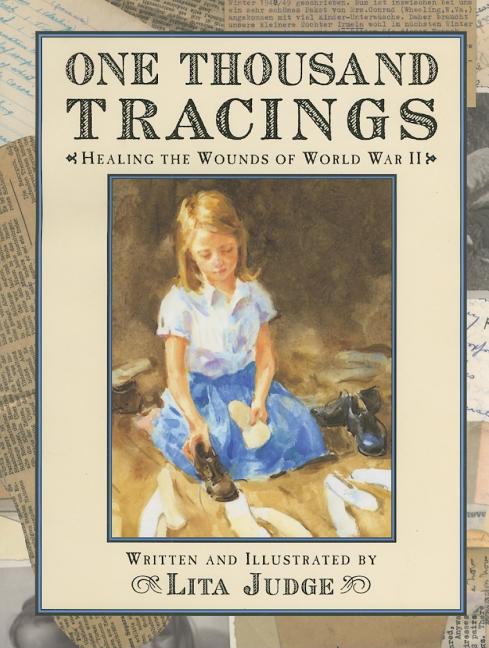Book Descriptions
for One Thousand Tracings by Lita Judge
From Cooperative Children's Book Center (CCBC)
From The United States Board on Books for Young People (USBBY)
Two families—one in the United States and another in Germany—de scribe through their correspondence how difficult it is to return to “normal” after six years of war. The narrator’s mother begins a campaign to send shoes to strangers who only weeks earlier had been the enemy. Letters about miss ing relatives, unemployment, but especially the scarcity of food, clothing, and even soap clearly reveal the aftereffects of war. Watercolor illustrations accompany photographs, shoe tracings, letters, and other memorabilia. An author’s note explains the inspiration for this civilian relief effort. Candace Fleming’s Boxes for Katje (Farrar, Straus and Giroux, 2003) provides informa tion about other post–World War II assistance endeavors. lmp
From the Publisher
One Thousand Tracings tells that story. In the aftermath of World War II a family in America established contact with a family in Germany and to help them sent them supplies, including shoes. The German family was extremely grateful and asked if their American friends would help others in Europe. Soon shoe tracings from all over the continent started pouring in to the modest Midwest farm. The network of families helping from the U.S. started to grow so that ultimately hundreds of people on both sides of the Atlantic were touched by this remarkable process.
Illustrated with a combination of paintings and collages of original photographs and foot tracings, this moving story is a granddaughter’s tender tribute to her grandparent’s who organized this relief effort. By sending hope and kindness they began healing the wounds of war. It is powerful reminder of the importance of humanitarianism during wartime.


